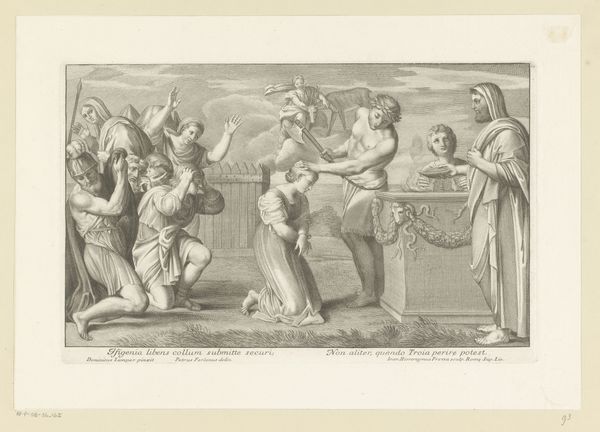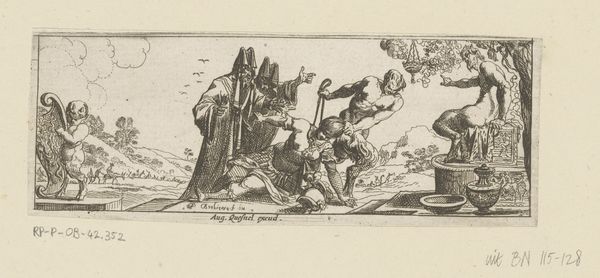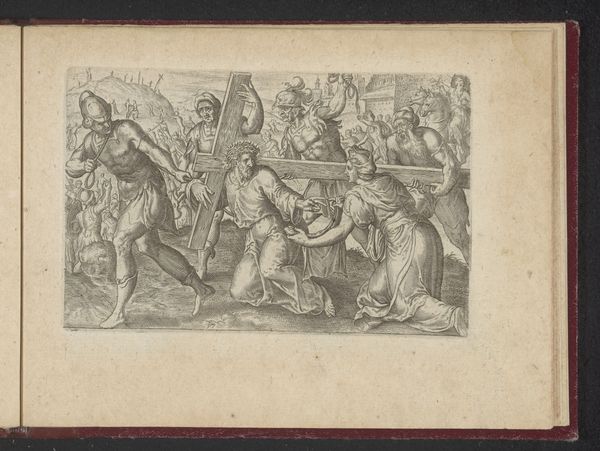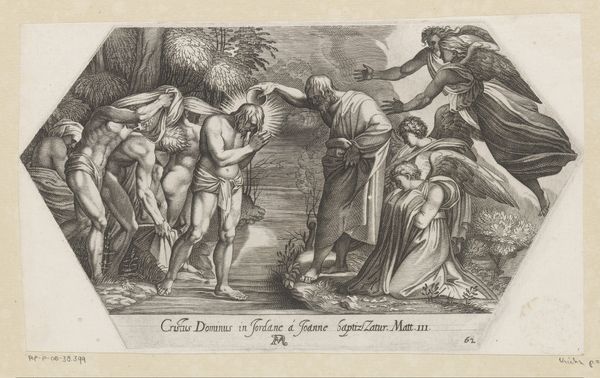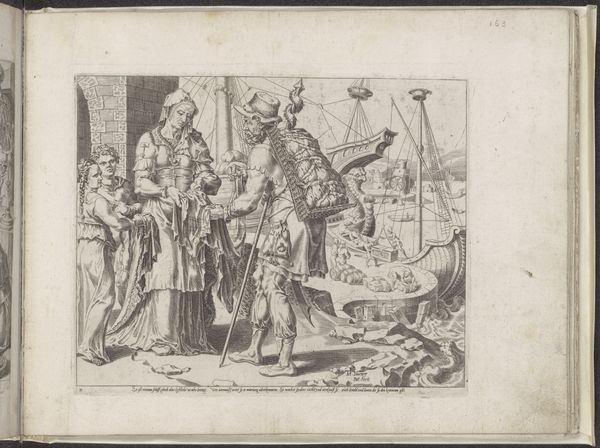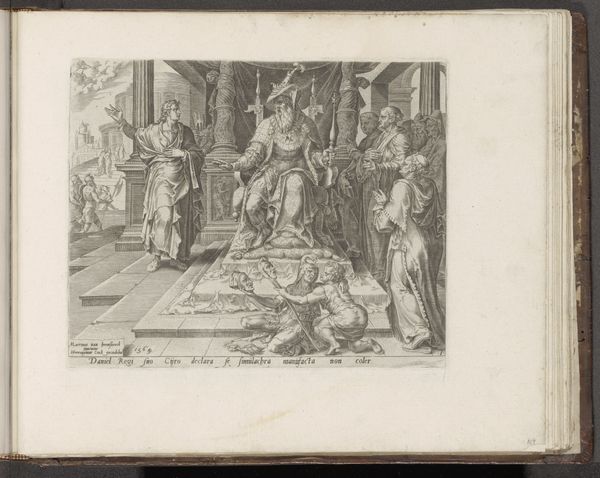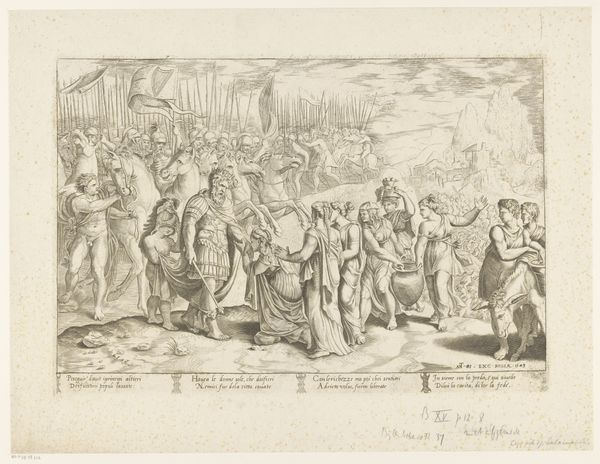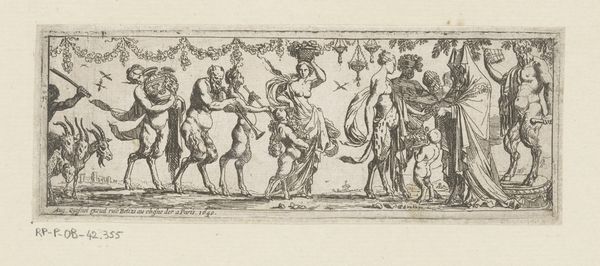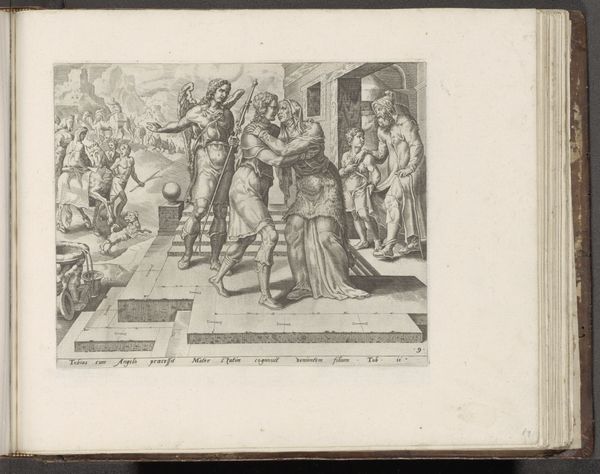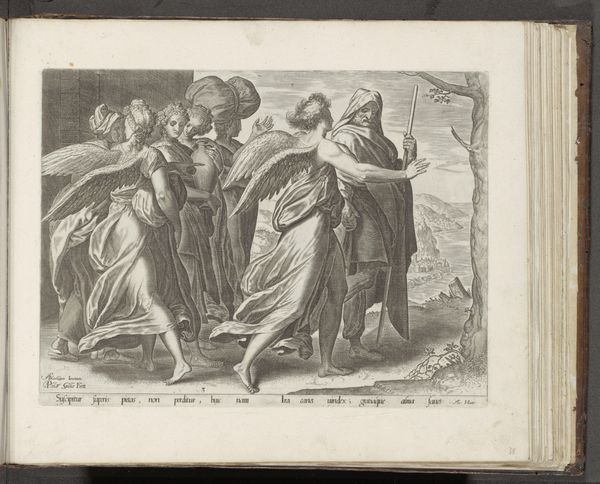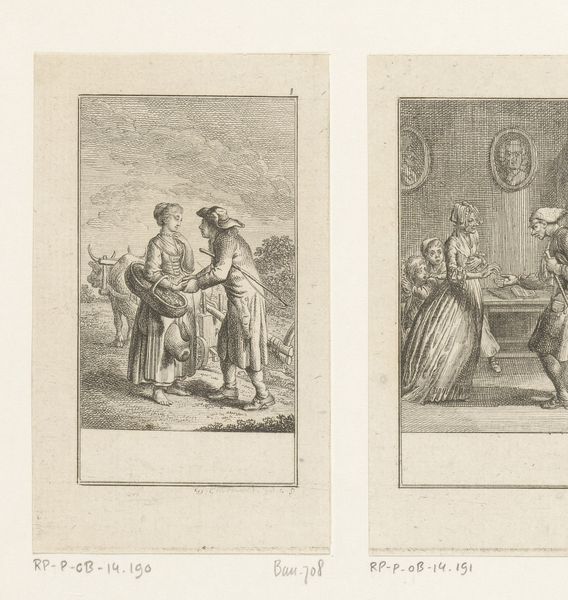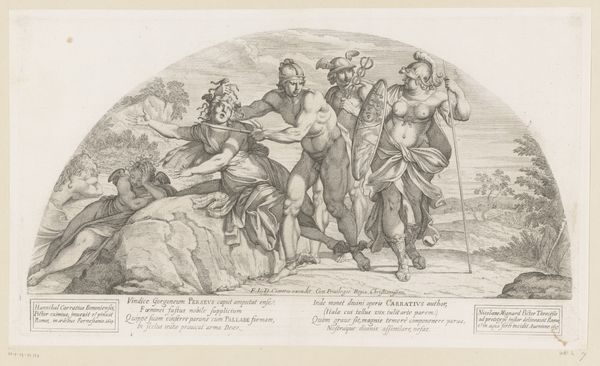
drawing, ink, engraving
#
drawing
#
ink drawing
#
allegory
#
baroque
#
pen drawing
#
pen illustration
#
pen sketch
#
figuration
#
ink
#
history-painting
#
engraving
Dimensions: height 71 mm, width 330 mm
Copyright: Rijks Museum: Open Domain
Curator: Editor: Here we have "Triumph of Arithmetic," a pen and ink drawing by Pierre Brebiette, dating sometime between 1608 and 1650. It's full of figures and activity; an allegory I presume. The detail achieved with just ink is remarkable! What catches your eye when you look at this? Curator: Well, given my materialist perspective, I find myself drawn to the labor involved in its production, not just of Brebiette, but also how it was consumed. Think about the ink itself – how it was made, traded, and became available. And this level of detail, achieved by repetitive actions and skilled handcraft; a testament to human input, and it existed within a larger system of patronage and consumption. What was the social purpose behind it? Editor: It was intended for viewing, so maybe admiration? Curator: But who was meant to admire it? And what did admiration mean within that period? Consider how prints and drawings functioned within Baroque society, where the wealthy were commissioning and collecting it for educational or representational purposes. "Triumph of Arithmetic" suggests the rising importance of calculation, essential for commerce and administration, becoming a sought-after piece that signifies an association to scholarly ideals. It could symbolize one's power or affiliation to academic circles. The meticulous skill of creating this is, in itself, a valuable commodity and reflects specific artisanal production in society. Does the choice of subject itself reflect shifts in labor or trade at that time? Editor: That’s fascinating. I hadn’t thought about the relationship between commerce and something like arithmetic being showcased in an artwork. I mostly saw it as symbolic. Curator: It's both. Symbolism often serves material interests. Reflect on how knowledge and representation are interwoven with these systems. How are the act of making and interpretation tied together? Editor: Thanks for that analysis. I’ll definitely look at drawings differently from now on, and remember to check what lay behind and in front of them.
Comments
No comments
Be the first to comment and join the conversation on the ultimate creative platform.
